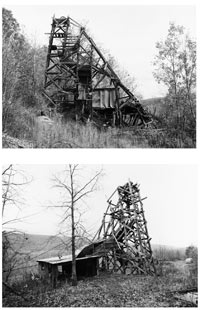Nobody ever discovered ugliness through photographs. But many, through photographs, have discovered beauty. Except for those in situations in which the camera is used to document, or to mark social rites, what moves people to take photographs is finding something beautiful. (The name under which Fox Talbot patented the photograph in 1841 was the calotype: from kalos, beautiful.) No body exclaims, "Isn't that ugly! I must take a photograph of it." Even if someone did say that, all it would mean is: "I find that ugly thing . . . beautiful." - Susan Sontag (opening paragraph from the chapter The Heroism of Vision in the book On Photography.
The suggestion that a photograph's content is entirely mediated by the photographer's own perception of beauty is a particularly bold statement but one to which it becomes difficult to disagree with. However, the decision process a photographer follows can present problems in terms of sincerity. Even when a photographer finds an image worthy enough of a section of film or memory space on a card they want it to be perfect. This can therefore have an effect on the eventual perception of the image, presented in a medium recognised to be a true-to-the-eye form.
The immensely gifted members of the Farm Security Administration photographic project of the late 1930s (among them Walker Evans, Dorothea Lange, Ben Shahn, Russell Lee) would take dozens of frontal pictures of one of their sharecropper subjects until satisfied that they had gotten just the right look on film -- the precise expression on the subject's face that supported their own notions about poverty, light, dignity, texture, exploitation and geometry. In deciding how a picture should look, in preferring one exposure to another, photographers are always imposing standards on their subjects. Although there is a sense in which the camera does indeed capture reality, not just interpret it, photographs are as much an interpretation of the world as paintings or drawings are. - Susan Sontag (Taken from the chapter In Plato's Cave from the book On Photography.)
This quote provides the thought that within modernist photography and within the case of Walker Evans etc, in terms of objectivity, the images taken with the intention of documenting the heartache of the great depression have successfully done so. However, in learning that each image was almost staged in order to present such heartache, it hinders the viewer's subjective and emotive response and therefore possibly dampens the integrity of the image somewhat: It's initial purpose is compromised.
Although the way in which the image is captured may be in some way false, it asks the modernist question of "Do photographs need to be contextualised and interpreted in order for them to have an effect?" My immediate response would be "No". Susan Sontag's essay Against Interpretation elaborates upon this suggestion. The idea that a photograph or piece of art can be simply seen as just an image, disregarding the usual conventions is an interesting and broad suggestion. One to which i can see both an agreement and disagreement for. Removing all context and the interpretation by artists and critics alike would definitely give people more to talk about rather than discuss the theories of others but at the same time i feel creating a base of ideology allows a starting point from which to build on. Regardless of which the majority of people prefer, neither point of view remove any interest from the art industry and only act to create interesting controversy . However i do feel removal of context and interpretation is an ideology that defines the modernist movement and modernist photography.











